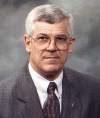|
Jan. 2001 Vol. 222 No. 1
Editorial
 |
Thomas R. Wright, Jr.,
Publisher
|
And Happy Birthday to us
Just a year ago, there was much uncertainty over the chaos the Y2K bug might
bring, plus an active debate about whether year 2000 was actually the beginning of the new millennium.
Fortunately, 2000 came in like a kitten and the millennium debate fizzled. However, for the oil industry, 2001
may offer a little more excitement, since it marks a couple of milestones.
This year marks the 100th anniversary of the discovery of Spindletop oil
field, which some describe as the beginning of the "machine age." It’s also the 85th
anniversary of Gulf Publishing Company, which was one of the many new enterprises spawned by the oil boom
starting in 1901.
Let’s start with Spindletop. January 10, 1901
was a momentous day in history, for both Beaumont, Texas, and the rest of the world. "At 10:30 in the
morning, the first great American gusher ‘roared in like a shot from a heavy cannon and spouted oil a
hundred feet over the top of the derrick out on the hummock that the world would soon know as Spindletop.’
Overnight, the town of Beaumont became a bedlam. The population doubled and doubled again. In hotels and
boarding houses, men slept in relays, twenty to a room. Speculators made fortunes, and lost them in the
gambling halls that kept open 24 hours a day. At one point, oil was so plentiful that it sold for three cents
a barrel and water so scarce that a barrel brought $6."1
Here’s how the front page of the Beaumont
Daily Enterprise reported the event the next day:
|
A GEYSER OF OIL
The Piping At Gladys City Was Blown Sky High
EIGHT INCH STREAM OF OIL
Pure Oil Spouting High in the Air –
Much Excitement in
the City |
|
|
The paper went on to say, "while the men employed by Mr. A. F. Lucas, who
has been prospecting for oil at Gladys City for the past year, were boring for oil, an explosion occurred that
forced the tubing into the air like it was a mere plaything, and then immediately followed a stream of black
petroleum and it has been spouting an eight-inch flow since that time. The first reliable news of the strike
was brought to the city by the Stratford brothers . . . and every available livery team (is) being pressed
into service to carry people to the well. A representative of
The Enterprise saw a big spouter, throwing black oil into the air at least a hundred feet high, and
there was no dissenting opinion . . . and conservative estimates say that it has already yielded 5,000 barrels
of oil, and steps were taken at once to save it by throwing up a levee."
The Lucas well, which blew for nine days before it was brought under control,
was later estimated to have produced at least 100,000 barrels a day. The huge gusher understandably generated
a great deal of speculation. Only a few days after the discovery, some observers were saying that it "may
herald the beginning of the oil age." The Enterprise said it "could mean tens or hundreds of
thousands of automobiles. Some are so bold as to predict that it presages an air age with the Wright Brothers’
invention ultimately being developed to the point where the aeroplane could become militarily and commercially
valuable."
That same article contained several prophetic statements, including: ". .
. it could bring about development that would place America as the first power of the world." Or, "today,
oil is used generally for lamp fuel and for lubrication. Now, it could become a fuel of abundance to supply
the energy necessary to create an entirely new world of thinking and action."
Magazine spawned. The speculators were
surprisingly accurate with their visions, and the discovery did lead to an entirely new industry. It also
prompted the establishment of a new paper, specializing in coverage of the now-established oil business. This
evolved into the Gulf Coast Oil News, a weekly magazine, whose first issue was December 9, 1916.
Incidentally, you could have purchased a one-year subscription for just $4, single copies for 15 cents.
The publication met with immediate success, as the following conversation
confirmed:2
Br-r-r-ring!
"Hello,
Gulf Coast Oil News."
"Yes, this is Mr. Hammerly of the San Leon Co. talking. I want to
compliment you on the new form of your publication, and hope you will continue in the progressiveness you
have shown in giving us a live, newsy paper, which we read with a great deal of interest. I am mailing you
my check tonight for twelve yearly subscriptions to be sent to the San Leon Co., as further evidence of our
appreciation. I am a busy man, so will have to ring off. Success to you, good bye."
Some of the original advertisers included Layne & Bowler Co., Blackmer
Rotary Pump Co., Humble Iron Works and Harold D. Hahl Company, which advertised Multigraph Letters
(Fac-Simile) and Form Letters (and we thought the Fax was a recent invention).
The magazine was renamed World Oil in July 1947, then became a monthly
in October 1947. The rest is history. 
- From Spindletop, Clark, James A., and Michel T. Halbouty, Gulf
Publishing Company, Houston, Texas, 1952 and 1980.
- Gulf Coast Oil News, Volume 1, Number 9, Dec. 9, 1916, pg. 5.
|




